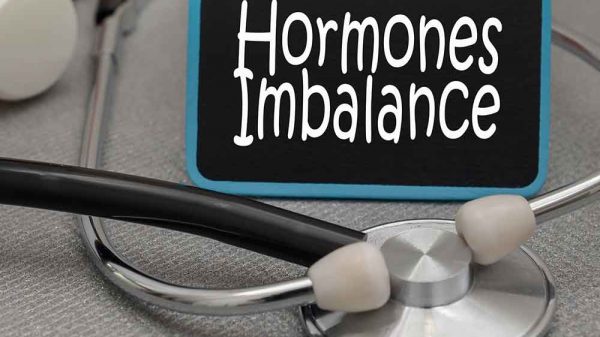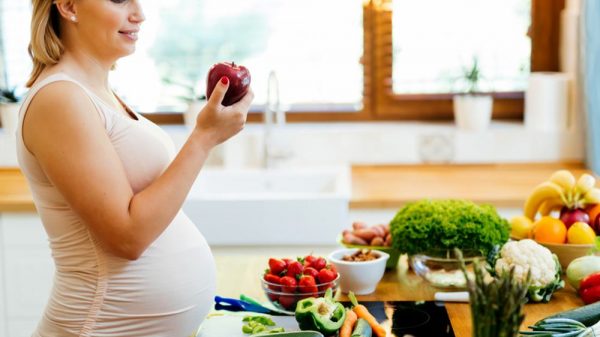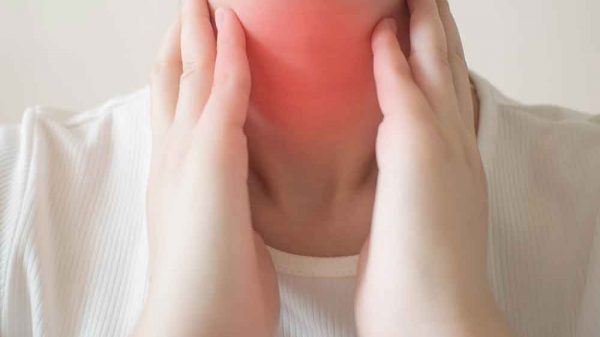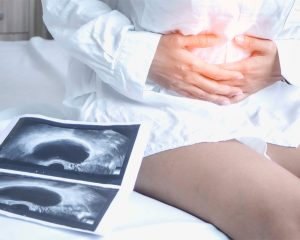Have you been diagnosed with endometriosis, or are you trying to lower your risk of developing it? If so, you’ve come to the right place. If you have endometriosis, rest assured that it is a highly treatable condition that can be managed with medicine, nutrition, and lifestyle changes.
Before we dive into the do’s and don’ts of the endometriosis diet, let’s first go over what it means to have endometriosis.
Quick Overview: What Is Endometriosis?
Endometriosis develops when endometrial tissue – also known as the lining of the uterus – begins to grow in areas of the abdomen outside of the uterus. Normally, when a woman gets her period, the uterus sheds its endometrial tissue that has thickened throughout the course of the menstrual cycle. The interesting thing is that the endometrial tissue outside of the uterus thickens and bleeds every month as well.
This is the reason for the horribly painful periods and cramps that are often associated with endometriosis. Other unpleasant symptoms include pain during bowel movements, pelvic pain, nausea, heavy periods, long periods, irregular cycles, and short cycle lengths.
So, how is endometriosis treated, and can endometriosis be cured naturally? First, endometriosis symptoms are usually managed with birth control pills, and endometrial growths can be removed using laparoscopic surgery.
If you have endometriosis, natural treatment is complementary to medical interventions. Medicine and diet work together synergistically, and neither works as well alone as it does with the other. In terms of medical interventions, endometriosis is treated through laparoscopic removal of endometrial growths and uterine fibroids.
The Endometriosis Diet: Foods You Should Eat
The key to the endometriosis diet is eating foods with anti-inflammatory and antioxidant properties. The Center for Endometriosis at the Department of Obstetrics, Gynecology, and Women’s Health at Saint Louis University School of Medicine has put together a helpful booklet to describe a therapeutic diet plan for endometriosis. (1)
Eat Organic Foods
If you have endometriosis, eating organic foods is extremely important. Are non-organic farms, pesticides, and harmful chemicals are used in the growth of produce. These pesticides help ward off pests and insects that eat the plants but at a high cost to human health. Ingesting lots of pesticides is associated with increased levels of oxidative stress, which may increase the risk of developing endometrial growths.
Not all fruits and vegetables contain the same levels of pesticides. If you have endometriosis – or just trying to avoid pesticides in general for that matter – it helps to know what kinds of produce tend to have more pesticides.
We tend to ingest more pesticides when the produce has edible skins. For example, apples, bell peppers, and tomatoes tend to be vehicles for pesticides to enter the human body. In contrast, produce that we peel before eating contains fewer pesticides. For example, it doesn’t make much of a difference whether we buy organic or non-organic avocados, onions, and mangoes.
Get Optimal Ratios of Essential Amino Acids
Essential amino acids are the components of protein that humans require on a daily basis. There are nine different essential amino acids that we require an optimal ratio on a daily basis. Nearly all human physiological processes rely on essential amino acids. For example, the synthesis of hormones and hormone balance is, in part, regulated by the presence of essential amino acids as the raw materials. Ensuring that you’re getting a balance of all essential amino acids every day is critical for supporting your health with endometriosis.
So, where can you get optimal ratios of essential amino acids? Generally, the best sources of essential amino acids are animal proteins, which contain optimal ratios of these amino acids in each serving of animal protein. However, since many individuals with endometriosis benefit from cutting back on meat and dairy products, it may be more difficult for individuals with endometriosis to get enough essential amino acids for optimal health. It is possible to get all essential amino acids from plant-based sources, though plant proteins must be combined throughout the day to ensure that no essential amino acid is left out. For example, to get ideal ratios of essential amino acids from plant proteins, it’s a good idea to eat tofu, brown rice, peanut butter, and black beans over the course of the day.
Get Plenty of Fruits and Vegetables
Fruits and vegetables are packed with anti-inflammatory and antioxidant particles like vitamins, minerals, polyphenols, and carotenoids. Anti-inflammatory foods packed with antioxidants reduce the likelihood of endometrial cells getting inflamed and traveling to settle on other organs and tissues.
Fruits and vegetables contain a wide variety of polyphenols, vitamins, and minerals. It’s important to consume a wide variety of products to benefit from all of these micronutrients. As a good rule of thumb, strive to eat fruits and vegetables of all different colors. The different colors of fruits and vegetables are indicative of the kinds of antioxidants and nutrients that are present within them.
Eat Foods with Resveratrol
Research on mouse models suggests that resveratrol plays a role in reducing the number of endometrial growths. (2)
Purple foods like grapes and blueberries contain resveratrol. Nonalcoholic wine is an excellent natural source of resveratrol that you can enjoy without the inflammatory effects of alcohol. Though more research is needed to investigate the exact impact of resveratrol on endometriosis, eating purple fruits packed with antioxidants can only help.
Drink Green Tea
Green tea contains epigallocatechin-3-gallate, which is also known as EGCG. EGCG is a potent antioxidant that has been shown to reduce oxidative stress in many organ systems. Research on mouse models suggests that green tea may help shrink endometrial growths while also inhibiting the proliferation of the growths. (3)
A proposed mechanism for this therapeutic impact of green tea on endometriosis is that EGCG is a powerful antioxidant that tightens the junctions between cells. When the junctions between cells are tighter, cells are bound together more effectively. This decreases the probability that endometrial cells will travel out of the uterus to attach and grow on other tissues.
Healthy Fats
Healthy fats have a protective effect on cells in the body and help quell the symptoms of endometriosis. Healthy fats include monounsaturated fats and polyunsaturated fats that have anti-inflammatory properties. Polyunsaturated fats demonstrate the most anti-inflammatory impacts, with omega-3 fatty acids being the fats with the most potent anti-inflammatory activity.
Omega-3 fatty acids in the form of DHA and EPA are present in fatty fish like salmon, mackerel, and sardines. The ALA form of omega-3 fatty acids can be found in walnuts, pecans, chia seeds, and flax seeds.
Foods to Avoid If You Have Endometriosis
Do you know what foods to avoid if you have endometriosis? When it comes to the endo diet, the foods to avoid are just as relevant as the foods you should be eating. Here we go through a list of certain foods that may trigger a sensitivity or proclivity for developing endometriosis. There are specific foods that you should stay away from to reduce your risk of developing endometriosis.
Red Meat
It’s no secret that in general, red meat is not the best kind of meat for you. Red meat tends to be packed with saturated fat and is known to increase the risk of developing high cholesterol and heart disease. Plus, the kind of protein present in red meat contributes to systemic inflammation.
To help lower your risk of endometriosis or developing more endometrial lesions, it’s important to avoid red meat. A study published in the American Journal of Obstetrics and Gynecology that followed 81,908 women over a period of 22 years found that women consuming high levels of red meat had a significantly higher risk of developing endometriosis. (4)
Dairy
Dairy can be particularly irritating for individuals with endometriosis. A lot of dairy products, such as milk and cream, contain high amounts of added hormones. These added hormones can interfere with the human endocrine system and throw off testosterone and estrogen levels, impacting the development of endometriosis. If you struggle with acne, avoiding dairy might be a major therapeutic move. And of course, if you’re trying to ward off endometrial growths, the best idea is to avoid dairy altogether.
Thankfully, there are many dairy substitutes on the market, so you don’t have to give up the tastes that you love. For example, choose milk substitutes and yogurts made of coconut milk, almond milk, cashew milk, and soy milk.
Added Sugars and Refined
Added sugars are a significant part of the American diet. Though added sugars may make foods taste good, they have a highly inflammatory impact on the human body and may contribute to endometriosis. When we eat added sugars, the sugar is immediately released into the bloodstream as glucose and spikes blood sugar. The pancreas immediately releases insulin to signal cells to uptake glucose from the bloodstream. Refined grains have a nearly identical effect. When we eat refined grains, simple carbohydrates are broken down into glucose molecules that spike blood sugar. Continual consumption of added sugars and refined grains over time leads to insulin resistance, hormone imbalances, inflammation, fatty liver disease, type 2 diabetes, and a higher risk of developing endometriosis.
Saturated Fat and Trans Fat
Saturated fat is also extremely inflammatory for the body and can trigger endometrial cells to grow outside the uterus. Saturated fat inhibits normal insulin function, increases cholesterol, and generally gets in the way of healthy metabolic functioning. When metabolic functions are thrown off, so are hormone levels, which can worsen endometriosis. Instead of saturated fat, stick to healthy sources of monounsaturated and polyunsaturated fats that fight against inflammation associated with endometriosis. To steer clear of saturated fats and trans fats, eliminate fatty meats, whole dairy products, fried foods, frozen meals, and baked foods from your diet.
Preservatives
Preservatives in processed food and pesticides have a very similar effect on the body. Preservatives in processed food are unnatural, and your body must work hard to process them and get rid of them. In the meantime, preservatives can contribute to oxidative stress and inflammation that can worsen endometriosis. Instead of preservatives, stick to whole foods that are unprocessed or minimally processed.
Gluten
If you have endometriosis or have a high endometriosis risk, following a gluten-free diet is a good idea. Gluten is a protein that is found in wheat and wheat products. While some individuals will experience an inflammatory reaction to gluten, not everyone with endometriosis will have a gluten sensitivity. Only some individuals who are particularly susceptible to gluten and react negatively to it. If you are sensitive to gluten, it’s best to eliminate it from your diet altogether.
Keep in mind that gluten isn’t exclusively found in bread, but also any food containing wheat. Gluten might be present in foods that you least expect it to be, like condiments. If you find that gluten triggers your endometriosis symptoms, always check the labels of products before buying them, to make sure no gluten is present.
Meal Ideas for the Endometriosis Diet
If you have endometriosis, it may be difficult to cut all of these foods out of your diet and try to figure out what to eat that will fit the endo diet while also satisfying your taste buds. Here we’ve put together a few ideas for breakfast, lunch, dinner, and snack to help you get started on making a meal plan for endometriosis.
Endo Diet: Breakfast Ideas
Parfait with Flaxseeds and Fruit
To make a yogurt parfait for breakfast, first choose your favorite dairy-free yogurt substitute. Because dairy-free yogurts tend to contain very little protein, add a serving of essential amino acid powder, and mix well. Top with crumbled walnuts, raspberries, blueberries, and a drizzle of honey.
Overnight Oats
First, start with gluten-free oats. Pour into a mason jar with a couple of tablespoons of ground flaxseeds. Top with your favorite dairy-free milk substitute such as soy milk or almond milk. Stir in blueberries and strawberries, and top with sliced bananas. Enjoy with a glass of hot or iced green tea for extra endometriosis-fighting polyphenols and antioxidants.
Endo Diet: Lunch Ideas
Salad
Prepare a salad of organic chopped spinach and kale. Top with chopped organic bell peppers, black beans, and a scoop of whole grains like cooked quinoa or millet. Toss together with your favorite olive oil-based dressing.
Veggie Wrap
Start with a gluten-free wrap. Spread the wrap with a generous amount of hummus, and top with your favorite veggies like cucumber, spinach, avocado, carrots, and sweet potato. For extra flavor, drizzle with a little balsamic vinaigrette and add a crumble of dairy-free feta cheese.
Endo Diet: Dinner Ideas
Tofu Stir-Fry
Sautee tofu with a medley of vegetables like carrots, snow peas, broccoli, sweet potato, onions, and garlic. Serve with a curry sauce over a bed of brown rice.
Baked Salmon
Salmon is packed with omega-3 fatty acids and a perfect way to incorporate essential amino acids into your diet. Bake a serving of salmon in your favorite marinade. Serve with sautéed asparagus and half a baked sweet potato. Enjoy a glass of nonalcoholic red wine on the side for extra resveratrol.
Endo Diet: Snack Ideas
Apple and Almond Butter
Slice an organic apple and serve with a spoonful of almond butter. This is an easy snack to throw together that also affords antioxidants and protein.
Protein Shake
A protein shake may be just what you need to keep you satisfied between meals. Combine a frozen banana with frozen blueberries, an essential amino acid supplement, ground flaxseeds, and soymilk. Blend until smooth, and enjoy!
Conclusion
Endometriosis is an extremely painful condition that is connected to inflammation. Dietary changes can be extremely helpful in managing endometriosis and preventing further development of endometrial growths. An anti-inflammatory diet rich in leafy greens, fruits, whole grains, nuts, seeds, omega-3 fatty acids, and essential amino acids can help manage endometriosis.
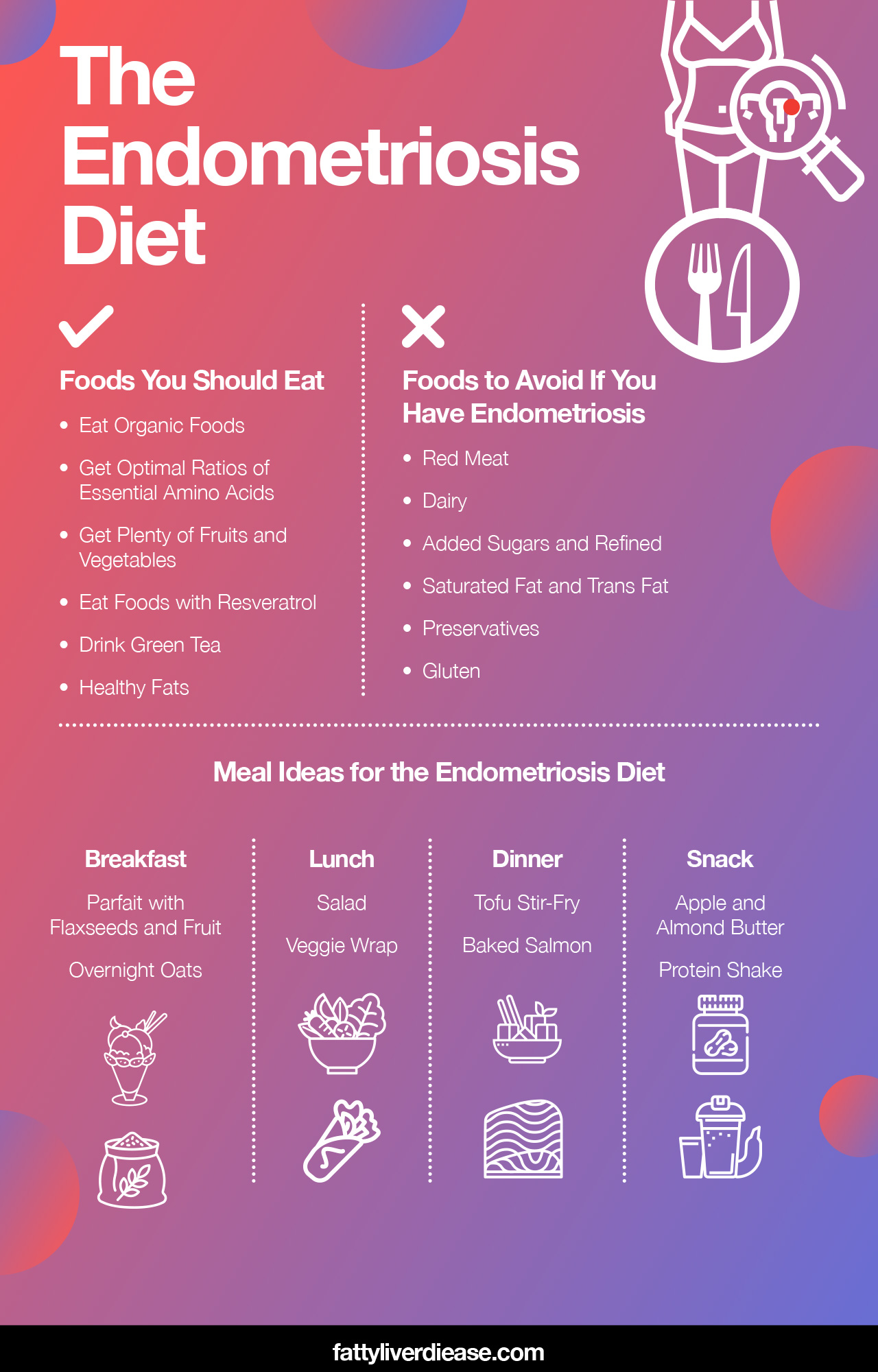
References:
(1) https://www.slucare.edu/ob-gyn/center-for-endometriosis/endometriosis-diet-booklet.pdf
(2) https://www.ncbi.nlm.nih.gov/pmc/articles/PMC3012565/
